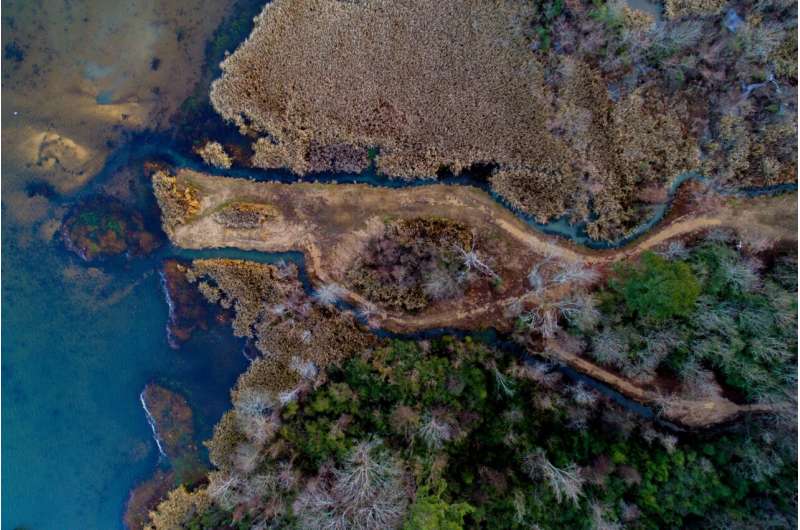This article has been reviewed according to Science X's editorial process and policies. Editors have highlighted the following attributes while ensuring the content's credibility:
fact-checked
trusted source
proofread
Satellite remote sensing helps monitor lake CO2 dynamics at large scale

Lakes play an essential role in carbon cycle. However, current bottom-up estimates of CO2 emissions from lakes have significant uncertainties due to insufficient field data.
Satellite remote sensing approach has broad coverage and high spatiotemporal resolution, which can significantly reduce the uncertainties in CO2 emission estimations. However, big challenges remain in developing remote sensing-based models for mapping lake CO2 at regional or global scales.
Recently, researchers led by Prof. Duan Hongtao from the Nanjing Institute of Geography and Limnology of the Chinese Academy of Sciences have developed a dissolved CO2 concentration (cCO2) estimation model for meso-eutrophic lakes at regional scale, and reconstructed the spatiotemporal dynamics of dissolved CO2 concentrations for the studied lakes from 2016–2021 using Sentinel-3 data.
Their findings were published in Remote Sensing of Environment on Jan. 3.
"The dissolved CO2 in lakes is not optically active. Therefore, finding satellite-derivable variables related to CO2 cycle processes and environmental factors in lakes is the key to realizing remote sensing estimation of lake cCO2," said Prof. Duan.
For lakes with conditions ranging from mesotrophic to highly eutrophic in the middle and lower reaches of the Yangtze and Huai River basins (ML_YHR) in Eastern China, satellite-derived chlorophyll-a, water temperature, Secchi disk depth, and photosynthetic active radiation-related variables are good predictors for lake CO2 concentrations.
"The stepwise quadratic polynomial model developed based on these variables showed high performance in predicting spatiotemporal dynamics of lake CO2 concentrations for ML_YHR lakes," said Prof. Duan.
The satellite-estimated annual mean CO2 concentrations for ML_YHR lakes revealed that about 28% of the lakes acted as weak atmospheric CO2 sinks (14.96 ± 1.13 μmol L-1) while the rest were sources (19.22 ± 2.02 μmol L-1), compared with a mean concentration of CO2 atmospheric equilibrium (16.29 μmol L-1). CO2 concentrations decreased with increasing eutrophication and decreasing lake size.
"This study advances current knowledge about CO2 emissions from emerging meso-eutrophic lakes and shows how satellite remote sensing can expand the spatiotemporal coverage of lake CO2," said Qi Tianci, first author of the study.
More information: Tianci Qi et al, Remote sensing of dissolved CO2 concentrations in meso-eutrophic lakes using Sentinel-3 imagery, Remote Sensing of Environment (2023). DOI: 10.1016/j.rse.2022.113431
Provided by Chinese Academy of Sciences



















